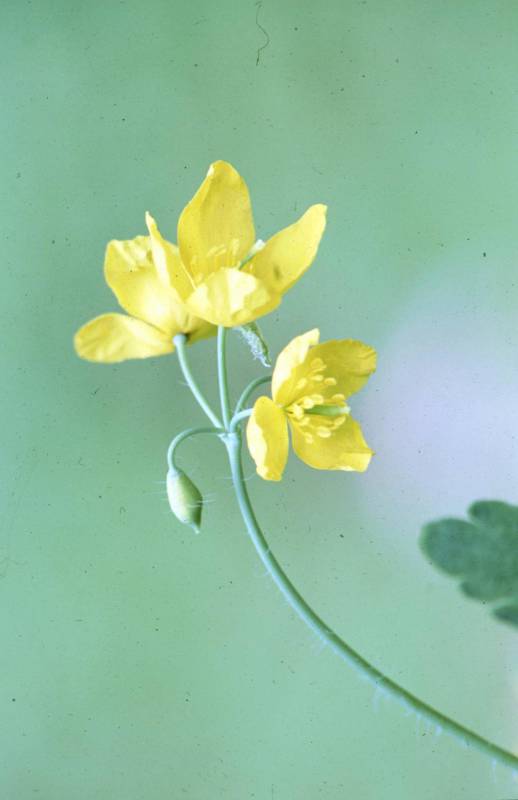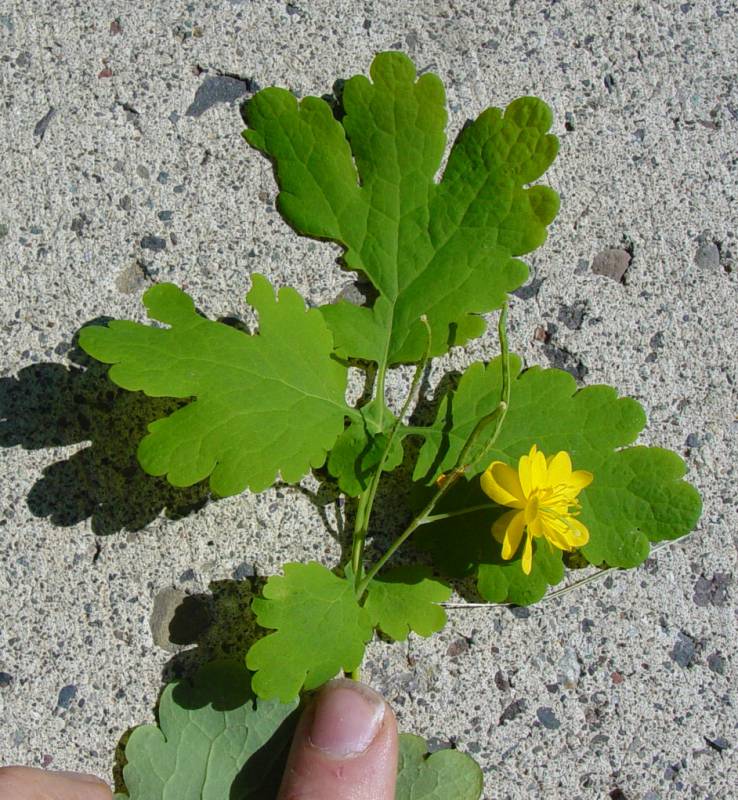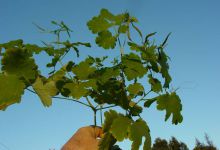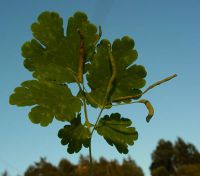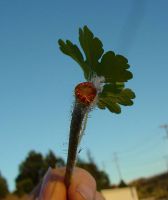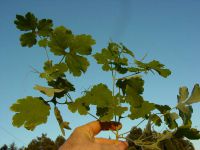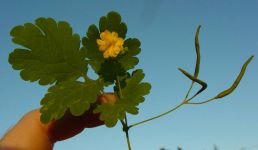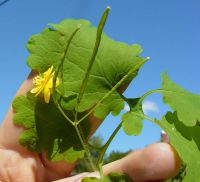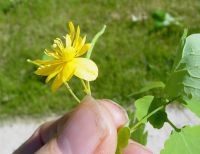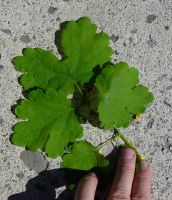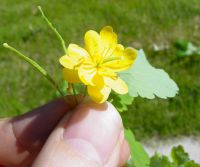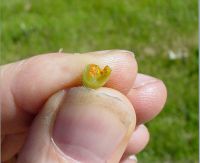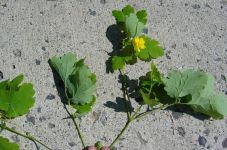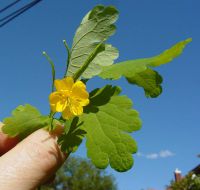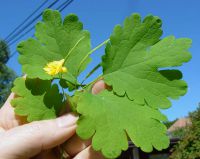Distribution: Occurring chiefly west of the Cascades crest in Washington; southern British Columbia to Oregon, east to Montana; also in eastern North America.
Habitat: Moist to dry woods, roadsides, fields, waste areas.
Flowers: May-July
Origin: Introduced from Eurasia
Growth Duration: Biennial
Conservation Status: Not of concern
Pollination: Bees, flies
Nearly glabrous perennial, the stems branching, ribbed, to 10 dm. tall.
Basal leaves in a rosette; cauline leaves alternate, up to 35 cm. long with petioles 2-10 cm. long; leaf blades deeply 5-9 lobed, the margins irregularly dentate.
Inflorescence a terminal umbel, the peduncle 2-10 cm. long, pedicles 5-35 mm. long; sepals 2, distinct, up to 1 cm. long; petals 4, bright yellow, obovate to oblong, up to 2 cm. wide; flowers 20-25 mm. in diameter; stamens 12-many; style 1 mm. long.
Capsules linear to narrowly oblong, 2-5 cm. long, glabrous
Publication: Sp. Pl. 1: 505. 1753.
PNW Herbaria: Specimen records of Chelidonium majus in the Consortium of Pacific Northwest Herbaria database
WA Flora Checklist: Chelidonium majus checklist entry
OregonFlora: Chelidonium majus information
E-Flora BC: Chelidonium majus atlas page
CalPhotos: Chelidonium majus photos

